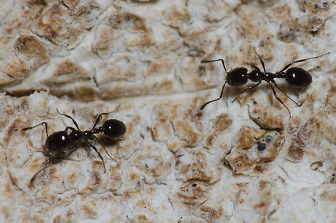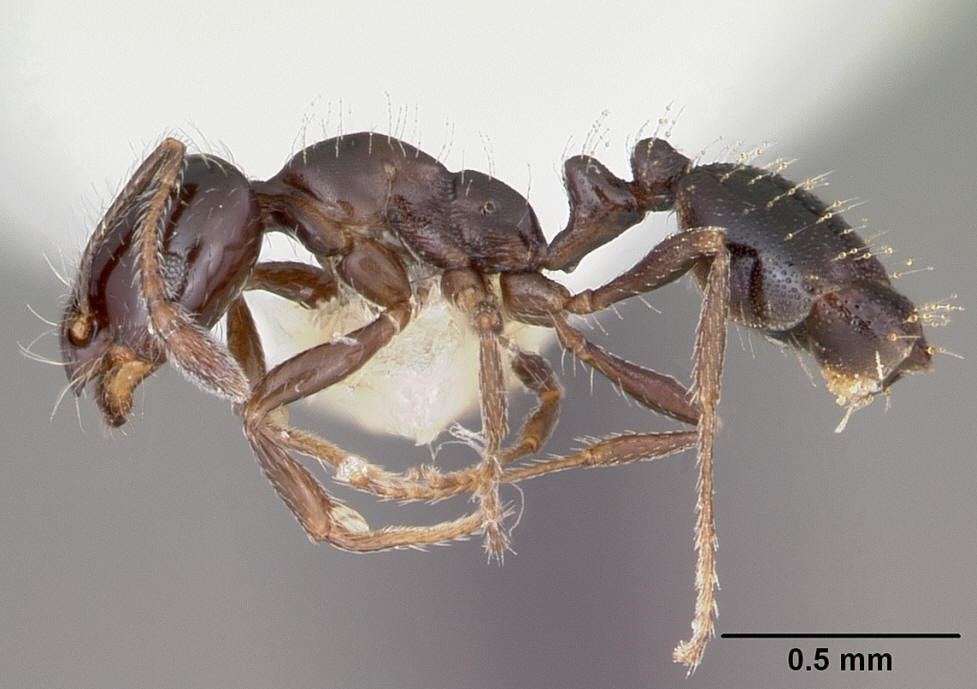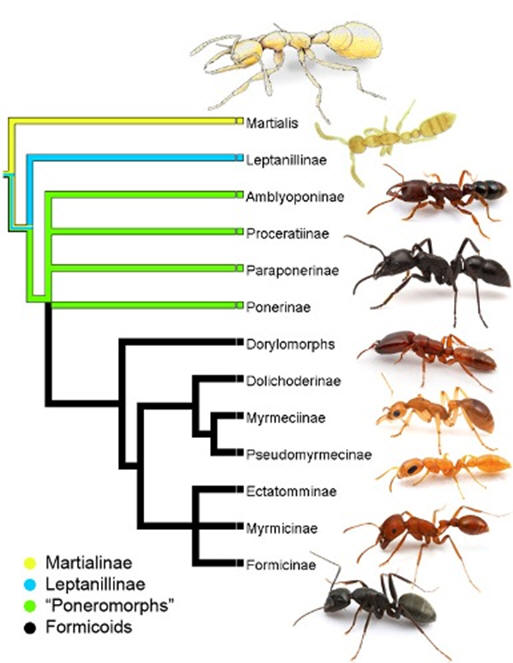Classification
Domain: Eukarya
The “Little Black Ant” is classified within the domain of Eukarya
because it has a distinct nuclues and contains organelles (Encyclopedia
of Life 2013).
Kingdom: Animalia
M. minimum belongs to the kingdom Animalia because it is multi-cellular, lacks cell walls, and is heterotrophic (it consumes food instead of producing it for themselves) (Encyclopedia of Life 2013).
This organism is categorized in the phylum Arthropoda due to its
triploblastic tissues that results in bilateral symmetry,
and its coelom, which is derived from protostome development. Monomorium minimum
undergoes ecdysis which is more commonly known as molting. It is also an
Arthropod because it has an exoskeleton and jointed appendages. Another organism in this
phylum includes:
Harpahe haydeniana.
Subphylum: Hexapoda
This organism is placed under the Hexapoda subphylum because it
contains a segmented body (a head, abdomen, and thorax),
three pairs of legs, a pair of antennae, a pair of compound eyes, and
generally a pair of wings (Encyclopedia of Life 2013).
Class: Insecta
M. minimum is part of the Insecta class because of its ability for flight, its social behaviors and communication, and its metamorphosis characteristics (Encyclopedia of Life 2013). See figure 1 below for reference to Arthopoda phylum.
Other organisms in this class include: Oiceoptoma noveboracense and Sarcophaga crassipalpis.
Order: Hymenoptera
When the word Hymenoptera is broken down, “Hymeno” means membrane and
“ptera” means wing, therefore this order contains winged insects
(College of Agriculture and Natural Resources 2013). This group
therefore contains ants, wasps, bees, sawflies, etc. More specifically,
this group contains insects that have proboscises or mouth parts, and two
pairs of wings that have barbs so they can stay together in flight
(Excyclopedia of Life 2013). Other organisms in this order include:
Xylocopa virginica,
Polistes dominula,
Xylocopa varipuncta.
Family: Formicidae
M. minimum belongs to this family due to its fused segmented, and relatively narrow section where its abdomen meets its thorax. It also has a metapleural gland that secretes acid by a means of defense against bacteria and fungi, and these are eusocial organisms where they live and work among each other (Encyclopedia of Life 2013). See Figure 2 below for additional information incorporating subfamilies. Other organisms in this family include: Eciton burchelli, Iridomyrex purpureus, Myrmecocystus mexicanus, and Solenopsis invicta.
Genus: Monomorium
Species: M. minimum
Lastly, these ants
distinguishable from others base on a few more integrate characteristics
such as: having a polygynous (more than one producing queen) and social
colony structure, completing metamorphosis in a distinct way, etc.
(Bhatkar 1992).
Monomorium minimum means "little black ant" (Bhatkar 1992).
Phylogenetic Trees
Figure 1. The phylogenetic tree to the right represents the evolutionary trends of many classes. This figure also represents that Myriapoda and Insecta are a monophyletic sister group with their next closest relative being the Crustacea group. All three of these groups are a subset of the clade Mandibulata where these organisms have specialized mouth parts (mandibules or jaws). In the case of the Insectas, they have a proboscis used for sensing and eating. M. minimum falls under this Insecta class.
For more information on M. minimum's Habitat, click here.
Click here to return to Home page.
Click here for References.




